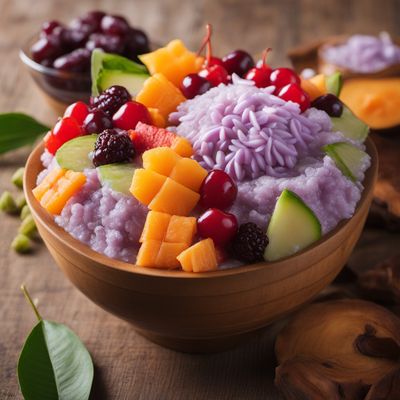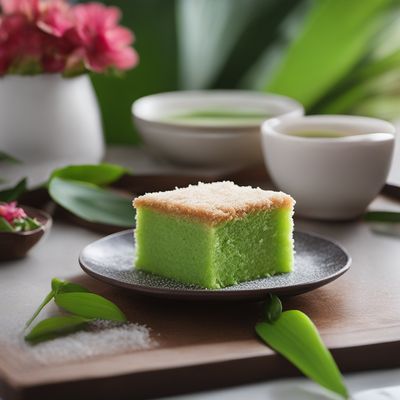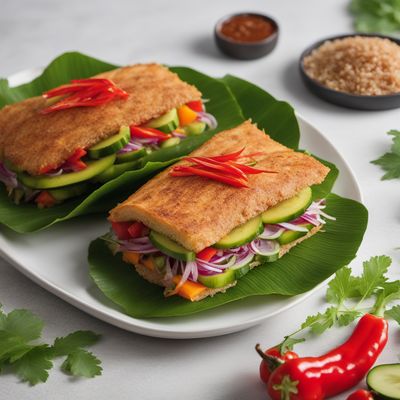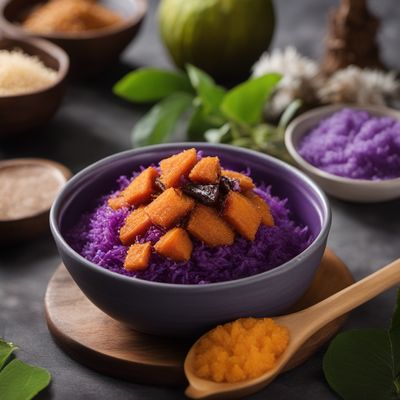
Ingredient
Coconut palm hearts
The Delicate Delight: Exploring the World of Coconut Palm Hearts
Coconut palm hearts are the inner core of young coconut palm trees. They have a pale ivory color, a firm yet tender texture, and a mild, slightly sweet flavor. The hearts are cylindrical in shape, with a smooth exterior and a soft, succulent interior. They are often described as having a delicate and refreshing taste, similar to artichokes or white asparagus. Coconut palm hearts are typically harvested when the tree is around 7 to 8 months old, ensuring optimal tenderness and flavor.
Origins and history
Coconut palm hearts have a rich history and are believed to have originated in the tropical regions of Central and South America. They have been a staple in the diets of indigenous communities for centuries. The harvesting of coconut palm hearts requires the removal of the entire tree, which has led to concerns about sustainability. However, efforts are being made to promote responsible harvesting practices and the cultivation of coconut palm trees specifically for heart of palm production.
Nutritional information
Coconut palm hearts are low in calories and fat, making them a healthy addition to meals. They are a good source of fiber, vitamin C, potassium, and manganese.
How to select
When selecting coconut palm hearts, look for cans or jars that are free from dents, bulges, or leaks. If buying fresh, choose hearts that are firm, with a pale ivory color and no signs of discoloration or browning. It is also important to check the expiration date to ensure freshness.
Storage recommendations
Unopened cans or jars of coconut palm hearts can be stored in a cool, dry place, such as a pantry, for up to 2 years. Once opened, transfer any unused hearts to an airtight container and refrigerate. They can be stored in the refrigerator for up to 5 days.
How to produce
Coconut palm hearts are typically produced by harvesting the inner core of young coconut palm trees. This process involves cutting down the tree and carefully removing the tender heart. However, it is recommended to leave the production to professionals due to the specialized knowledge and equipment required.
Preparation tips
Before using coconut palm hearts, rinse them under cold water to remove any excess brine or salt. They can be enjoyed raw in salads or lightly cooked in stir-fries, soups, or pasta dishes. To preserve their delicate flavor and texture, it is best to add them towards the end of the cooking process. Coconut palm hearts can also be marinated or pickled for added flavor.
Culinary uses
Coconut palm hearts are commonly used in salads, appetizers, and main dishes. They can be sliced and added to fresh green salads, used as a filling in sandwiches or wraps, or incorporated into stir-fries and curries. Their mild flavor pairs well with citrusy dressings, herbs, and spices, allowing them to complement a wide range of cuisines.
Availability
Coconut palm hearts are commonly available in tropical regions such as Southeast Asia, Central and South America, and the Caribbean. They can also be found in specialty grocery stores or online.
More ingredients from this category
Recipes using Coconut palm hearts » Browse all

Halo-Halo Delight
Tropical Bliss: A Refreshing Twist on Halo-Halo

Peranakan Coconut Tapioca Cake
Nyonya Delight: Fragrant Coconut Tapioca Cake

Dominican Coconut Sandesh
Coconut Delight: A Tropical Twist on Indian Sandesh

Kuih Kaswi with a Twist: A Taste of Eswatini
Sweet Delights from the Kingdom: Eswatini's Kuih Kaswi

Lot Chong Nam Kathi
Coconut Pandan Jelly with Sweet Coconut Sauce

Turks and Caicos Coconut Leaf Sandwich
Tropical Delight: Coconut Leaf Sandwich with a Caribbean Twist

Assamese-style Rice Flour Doughnuts
Puffed Rice Flour Delights: Assamese-style Doughnuts

Henan-style Coconut Rice Cake
Coconut Delight: Henan-style Baye Baye

Makassar-style Coconut Dumplings
Savory Coconut Delights: Makassar-style Kozhukkatta

Sapin-sapin Recipe
Layers of Delight: A Colorful Filipino Dessert

Kuih Kaswi with a Twist
Coconut Delight: A Modern Twist on Kuih Kaswi

Indonesian Coconut Pancakes
Coconut Delight: Indonesian Serabi Pancakes